Camera Obscura & Pinhole photography
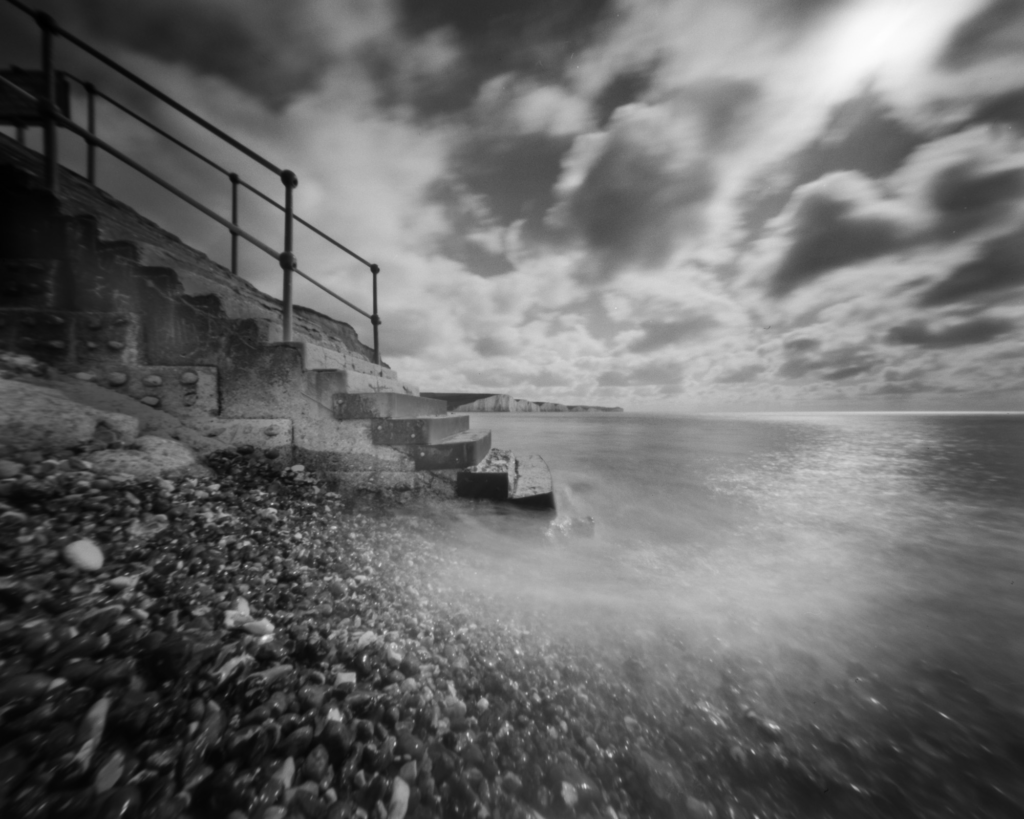
Camera obscure consists of a box, tent or room with a small hole in one side or the top. Light from an external scene such as a window passes through the hole and strikes a surface inside, where the scene is reproduced, invented, but with colour and perspective preserved. Camera obscuras with a lens in the opening have been used since the second half of the 16th century and became popular as aids for drawing and painting. The technology was developed deeper into the photographic camera in the first half of the 19th century, when camera obscurer boxes were used to expose light-sensitive materials to the projected image. The camera obscura was used to study eclipses without the risk if damaging the eyes by looking directly into the sun. As a drawing aid, it allowed tracing the projected image to produce a highly accurate representation, and was especially appreciated as an easy way to achieve proper graphical perspective. before the term camera obscure was first used in 1604, other terms were used to refer to the devices; cubiculum obscurum, cubiculum tenebrecosum and locus obscurus.
A camera obscura without a lens but with a very small hole is sometimes referred to was a pinhole camera, although this more often refers to simple lensless cameras where photographic film or photographic paper is used. Cameron Gillie is a photographer who used pinhole photography, he stated “My pinhole photography is created with a camera that is nothing more than a light-tight box with a tiny hole that projects an image on film. There is no lens and no viewfinder. A pinhole camera boils photography down to its simplest components: light and compositition, a huge contrast to today’s photography. As a formal photojournalist, I worked with digital photography since its very beginning. In contrast, my pinhole photography is the oldest form of photography. The limitations and simplicity of pinhole makes photography new again for me. This simplicity continues to teach me invaluable lessons about photography and the way I see the world.”
Nicéphore Niépce and Heliography
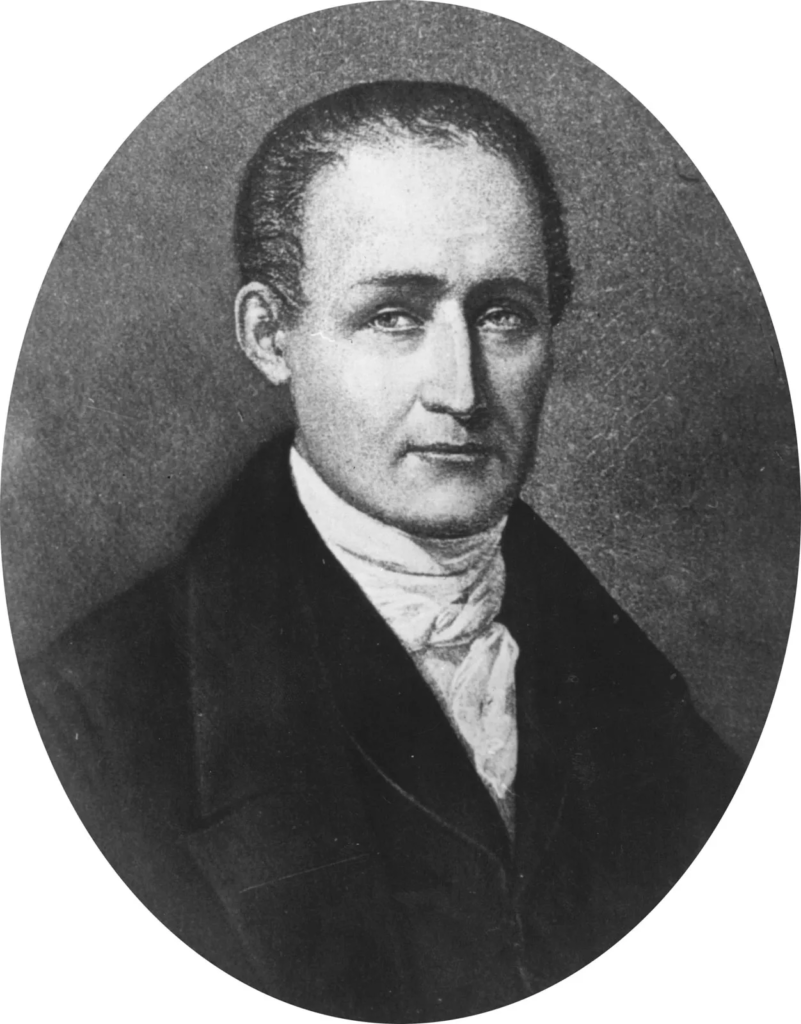
The Niece Heliograph was made in 1827, during this period of fervent experimentation. It is the earliest photograph produced with the aid of the camera obscurer known to survive today. The photograph was made by Joseph Nicephore Niece (1765-1833), born to a prominent family at Chalon-sur-Saone in the Burgundy region of France. Motivated by the growing popular demand for affordable pictures, Niepce’s photographic experiments were conducted with the dual aims of copying prints and recording scenes from real life in the camera. at his family estate in the nearby village of Saint-Loup-de-Varennes, he produced legible but fleeting camera pictures in 1816. over the next decade he tried an array of chemicals, materials and techniques to advance the process he ultimately called “heliographie” or “sun writing.” To make the heliograph, Niepce dissolved light-sensitive bitumen in oil of lavender ands applied a thin coating over a polished pewter plate. He inserted the plate into a camera obscurer and positioned it near a window in his work-room. After several days of exposure to sunlight, the plate yielded an impression of the courtyard, outbuildings and trees outside. Writing about his process in 1827, Niepce acknowledged that it required further improvements, but was nevertheless “the first uncertain step in a completely new direction”.
In 1829, Niece entered into a formal partnership with Louis-Jacques-Mande Daguerre, proprietor of the famous Diorama in Paris. Daguerre continued to make vital improvements after Niepce’s death and introduced his “Dagguerreotype” process in 1839. after this announcement, the Niepce Heliograph was brought forth by early supporters as evidence of his role in photography invention.
Louis Daguerre & Daguerreotype

Louis Daguerre was born on November 18th 1787 in Paris, and it was he who discovered that exposing an iodized silver plate in a camera would result in a lasting image if the latent image on the plate was developed by exposure to fumes of mercury and then fixed by a solution of common salt. In 1829, Daguerre partnered with Nicéphore Niépce. Niépce died suddenly in 1833, but Daguerre continued experimenting, and evolved the process which would subsequently be known as the daguerreotype. After efforts to interest private investors proved fruitless, Daguerre went public with his invention in 1839. At a joint meeting of the French Academy of Sciences and the Académie des Beaux Arts on 7 January of that year, the invention was announced. Daguerre explained and demonstrated the process only to the Academy’s perpetual secretary François Arago, who proved to be an invaluable advocate. Members of the Academy and other select individuals were allowed to examine specimens at Daguerre’s studio. The images were enthusiastically praised as nearly miraculous, and news of the daguerreotype quickly spread. Arrangements were made for Daguerre’s rights to be acquired by the French Government in exchange for lifetime pensions for himself and Niépce’s son. On January 9, 1839, a full description of his daguerreotype process was announced at a meeting of the Academy of Sciences by the eminent astronomer and physicist François Arago. Daguerre was appointed an officer of the Legion of Honour. In 1839 Daguerre and the heir of Niépce were assigned annuities of 6,000 francs and 4,000 francs, in return for their photographic process.
Henry Fox Talbot
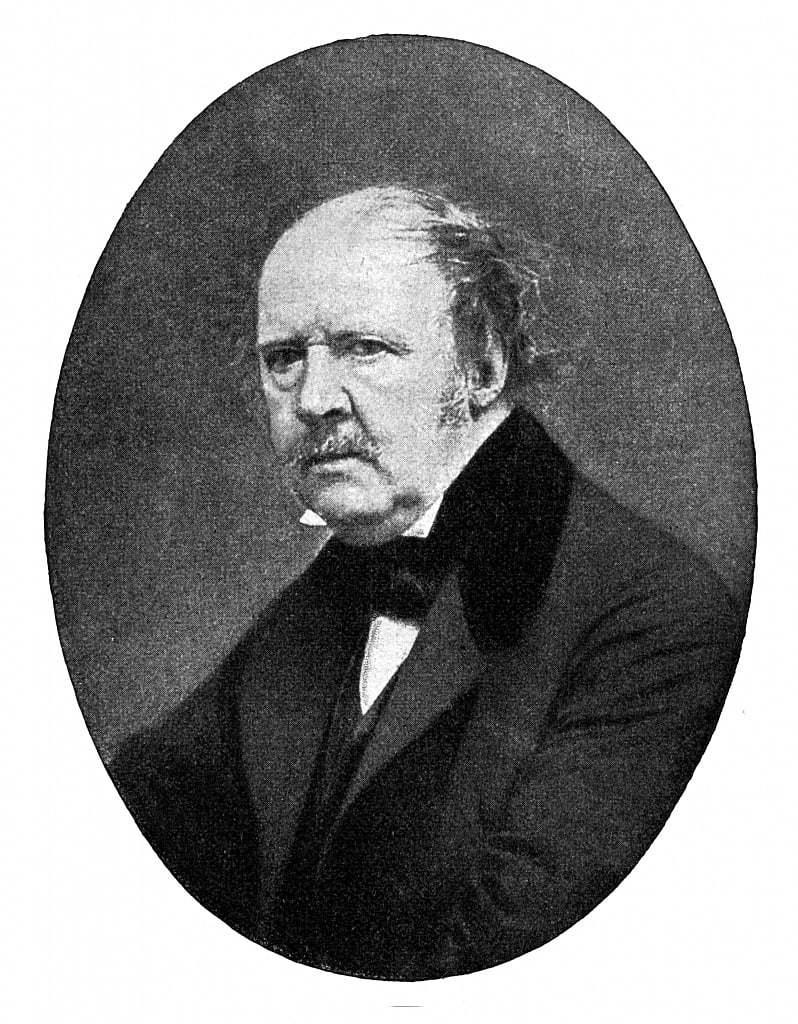
Henry Fox Talbert is very well known for being a successful pioneer of photography, scientist and inventor. Amongst his other successes he created a method of photography by using a ‘calotype’ which is a negative-positive process which is also known as the ‘paper negative’. He created images when exposed to light, these images were easy to produce and easy to distribute. However, they faced many drawbacks such as the people in the photos looking ‘on the edge of being present’ and seen as looking not quite alive due to a low sharpness and graininess, this caused a loss of fine detail. However, these images were popular as they captured a moment in time, fixed into place which was profitable and popular at this time. He used different light sensitive chemicals and salts such as silver nitrate and silver chloride. The original negative and positive process invented by William Henry Fox Talbot, the calotype is sometimes called a “Talbotype.” This process uses a paper negative to make a print with a softer, less sharp image than the daguerreotype, but because a negative is produced, it is possible to make multiple copies. The image is contained in the fabric of the paper rather than on the surface, so the paper fibers tend to show through on the prints. The process was superceded in the 1850s by the collodion glass negative. Because of Talbot’s patent rights, relatively few calotypes were made in the United States.
Richard Maddox
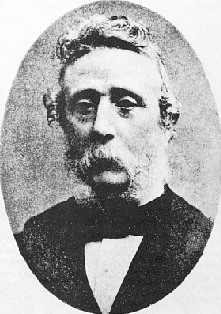
Richard Leach Maddox (4 August 1816 – 11 May 1902) was an English photographer and physician who invented lightweight gelatin negative dry plates for photography in 1871. In photography, the Collodion process was invented in 1851 by Frederick Scott Archer. This invention required only two to three seconds of light exposure to produce an image, but plates had to be sensitized at the time of exposure, exposed while the emulsion was still wet, and processed immediately after exposure in the camera. When he noticed that his health was being affected by the ‘wet’ collodion’s ethervapor, Maddox began looking for a substitute. Richard Leach Maddox, M.D., photography was given an early impetus to become a disseminator of medical knowledge. His interest in the camera, combined with his poor health and his medical training, enabled him to invent the gelatin bromide negative that is the backbone of today’s photographic film. Dr. Richard Maddox created a dry plate technique that allowed photographers to develop photographs without using the wet methods of the collodion process. This technique involved using gelatin instead of glass to make photographic negative. The dry plate process quickly replaced the wet plate collodion process that required the mixing of dangerous chemicals and immediate exposure of the wet plate.
George Eastman
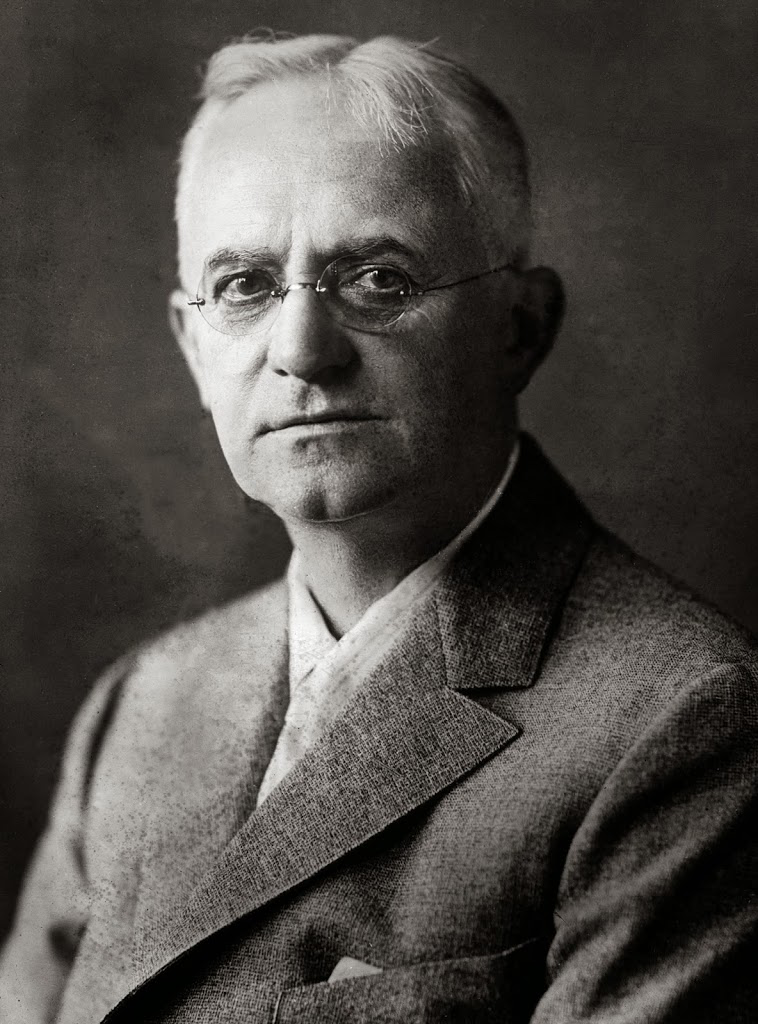
George Eastman was an American entrepreneur who founded the Eastman Kodak Company and helped to bring the photographic use of roll film into the mainstream. Eastman changed the world through his entrepreneurial spirit, bold leadership, and extraordinary vision. He will be remembered throughout history for founding the Eastman Kodak Company and revolutionizing the photography, film, and motion picture industries. Eastman came up with the name Kodak because he believed products should have their own identity, free from association with anything else. So in 1888, he launched the first Kodak camera (a few years later, he amended the company name to Eastman Kodak). The first successful roll-film hand camera was launched publicly in the summer of 1888. Inventor George Eastman received a patent for the camera’s shutter and the trademark for the Kodak name on September 4, 1888. In the 1880s, Eastman developed a convenient method of preparing ready-to-use plates. Improvements led to flexible, roll film as well as photo processing and printing done by mail order. Millions of people worldwide captured memories using cameras and film, leaving all the chemistry to Kodak.
Kodak (brownie) – George Eastman
The Brownie was a basic cardboard box camera with a simple convex-concave lens that took 2+1⁄4-inch square pictures on No. 117 roll film. It was conceived and marketed for sales of Kodak roll films. Because of its simple controls and initial price of US$1 (equivalent to $37 in 2023) along with the low price of Kodak roll film and processing, the Brownie camera surpassed its marketing goal. It was invented by Frank A. Brownell for the Eastman Kodak Company. Named after the Brownie characters, the camera was initially aimed at children. More than 150,000 Brownie cameras were shipped in the first year of production, and cost 5 shillings in the United Kingdom.
The Brownie camera was launched in 1900 to target new hobbyist photographers — children — and with its $1 price tag, it also became a favorite of servicemen. Eastman supported the military in other ways as well, developing unbreakable glass lenses for gas masks and a special camera for taking pictures from planes during World War I. In all, Eastman’s innovations started the amateur photography craze that is still going strong today.
Film / print photography
The first flexible photographic roll film was sold by George Eastman in 1885, but this original “film” was actually a coating on a paper base. As part of the processing, the image-bearing layer was stripped from the paper and attached to a sheet of hardened clear gelatin. Once the film is processed, it is then referred to as a negative. The negative may now be printed; the negative is placed in an enlarger and projected onto a sheet of photographic paper. Many different techniques can be used during the enlargement process. Two examples of enlargement techniques are dodging and burning. The first film that was in a roll and flexible was made by George Eastman in but it wasn’t synthetic but on paper. Photographic film is a material used in photographic cameras to record images. It is made of transparent plastic in a shape of a strip or sheet, and it has one side covered with light-sensitive silver halide crystals made into a gelatinous emulsion. When a photographic film is exposed to light by a photographic camera, it chemically changes depending on the amount of light absorbed by each crystal. These changes create an invisible latent image in the emulsion, which is then fixed and developed into a visible photograph. Black and white photographic films have one layer of silver halide crystals, while the colour film has three layers, each sensitive to a different colour. Some colour films have even more layers.
Digital photography
Digital photography is a process that uses an electronic device called a digital camera to capture an image. Instead of film, it uses an electronic digital sensor to translate light into electrical signals. In the camera, the signals are stored as tiny bits of data in bitmaps, tiny bits of data that form the image. Digital photography spans a wide range of applications with a long history. Much of the technology originated in the space industry, where it pertains to highly customized, embedded systems combined with sophisticated remote telemetry. Any electronic image sensor can be digitized; this was achieved in 1951. Six years later, in 1957, the first digital image was produced through a computer by Russell Kirsch. It was an image of his son. The photography changed from film to digital in the 1990’s. The early 1990s brought a dramatic change with the advent of digital technology. Instead of using grains of silver embedded in gelatin, digital photography uses silicon to record images as numbers. Computers process the images, rather than optical enlargers and tanks of often toxic chemicals. The modern era in digital photography is dominated by the semiconductor industry, which evolved later. An early semiconductor milestone was the advent of the charge-coupled device image sensor, first demonstrated in April 1970; since then, the field has advanced rapidly.
